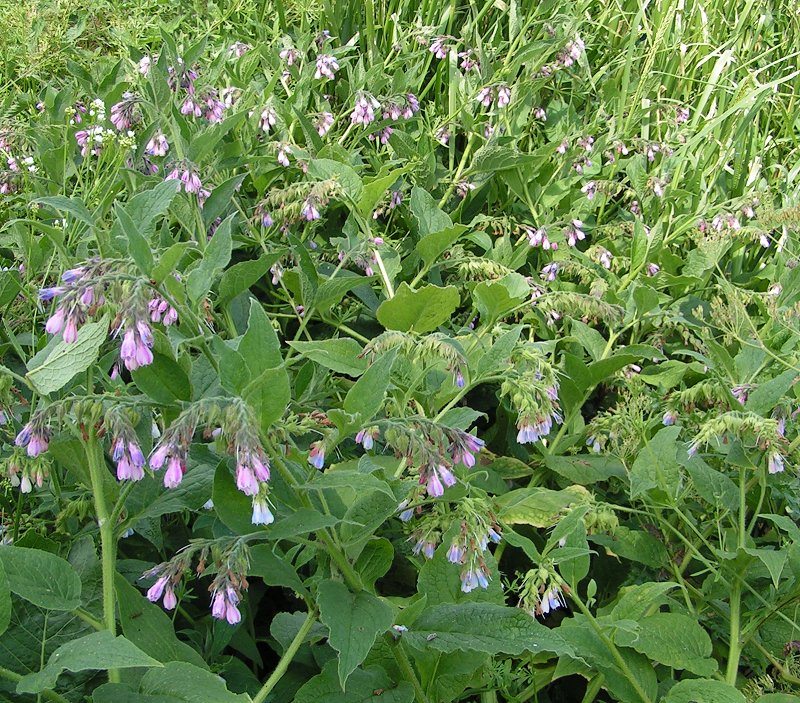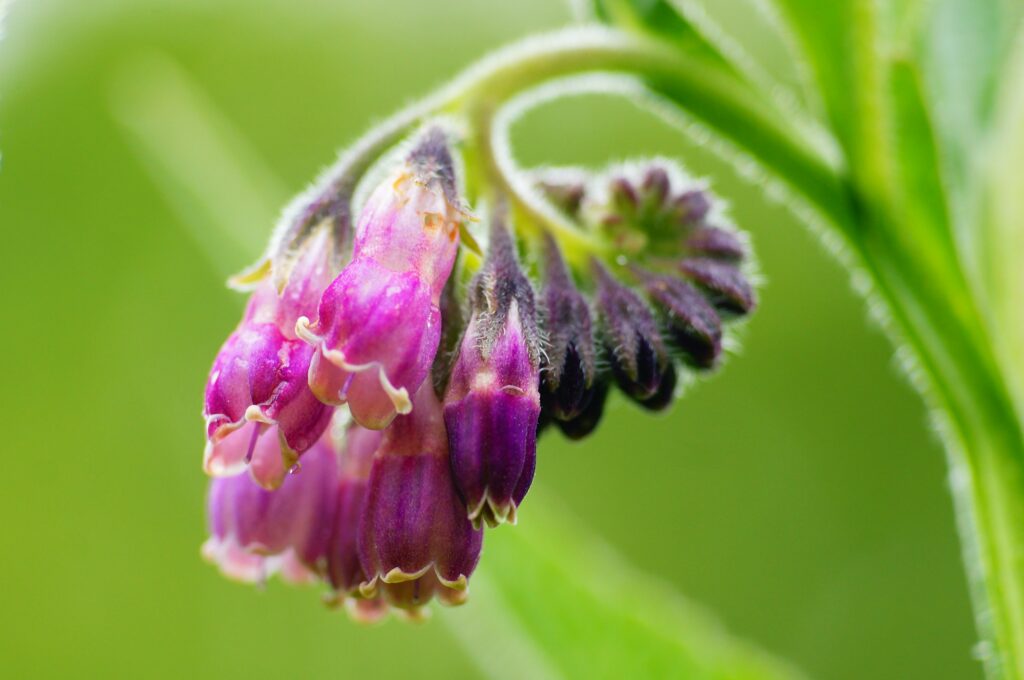The Ultimate Guide to Growing and Caring for Comfrey

Comfrey (Symphytum officinale) is a beautiful perennial flower that can enhance any garden. With its vibrant green leaves and bell-shaped flowers, it’s a favorite among gardeners for its aesthetic appeal and practical uses. In this comprehensive guide, we will dive deep into the world of comfrey, exploring everything from its care requirements to different types and potential benefits. So, grab your gardening gloves and let’s get started on the journey of growing and nurturing comfrey plants!
The Beauty of Comfrey
Comfrey is a hardy plant that thrives in various environments, making it a versatile addition to any garden. Its distinctive large, dark green leaves and vibrant blooms attract bees and other pollinators, adding life and beauty to your outdoor space. Whether you’re looking to create a colorful wildflower garden or add a touch of nature to your container plantings, comfrey is the perfect choice.
Benefits of Growing Comfrey

- Attracts pollinators: Bees and other beneficial insects are drawn to comfrey, promoting a healthy ecosystem in your garden.
- Low maintenance: Comfrey requires minimal care once established, making it a hassle-free plant for busy gardeners.
- Green manure: The deep root system of comfrey allows it to absorb nutrients from the soil, making it an excellent green manure for enriching the soil.
- Versatile: Comfrey can thrive in a variety of soil conditions and light levels, making it adaptable to different environments.
Comfrey Care Tips
Comfrey is known for its resilience and adaptability, but like any plant, it thrives best with proper care and attention. Here are some essential care tips to help your comfrey plants flourish:
Light
- Comfrey grows well in full sun to partial shade, requiring at least three hours of direct sunlight each day.
- In warmer regions, plant comfrey where it can receive shade from the harsh afternoon sun to prevent wilting.
Soil
- While comfrey can tolerate a wide range of soil conditions, it prefers rich, loamy soil with good drainage.
- A slightly acidic to neutral pH level is ideal, but comfrey can also tolerate slightly alkaline soil.
Water
- Comfrey plants enjoy consistent soil moisture, especially during dry spells.
- Keep the soil of young plants consistently moist but not waterlogged, and water mature plants when the top inch or two of soil dries out.
Temperature and Humidity
- Comfrey is hardy in extreme temperatures within its growing zones, dying back in the winter but regrowing in the spring.
- Maintain adequate soil moisture to support healthy growth, as humidity levels typically do not impact comfrey.
Fertilizer
- Comfrey’s deep roots draw nutrients from the soil, reducing the need for additional fertilization.
- Provide organic amendments such as compost in the spring to support healthy growth and blooming.
Tip: Use comfrey leaves to create compost tea, which can help prevent powdery mildew and enhance plant growth.
Types of Comfrey
Various species of plants are commonly referred to as comfrey, including Symphytum caucasicum, Symphytum grandiflorum, and Symphytum x uplandicum. Each type has unique characteristics and benefits, adding diversity to your garden.
Pruning and Propagating Comfrey
Maintaining comfrey plants involves routine pruning and propagation to ensure healthy growth and longevity. Here’s how you can effectively prune and propagate comfrey in your garden:
Pruning
- In the second year of growth, trim comfrey plants back to about 6 inches above the ground during the winter dormant period.
- After flowering, cut back the stalks to encourage new growth, but avoid severe pruning in later years.
Propagating Comfrey
- Propagating comfrey from root cuttings is a simple and reliable method for expanding your comfrey garden.
- Root cuttings can be taken and planted in suitable soil conditions for successful propagation.
How to Grow Comfrey From Seed
- While comfrey can be grown from seed, it requires a winter chilling period to germinate and may take up to two years to sprout.
- Propagating comfrey from root cuttings is a more efficient and practical method for establishing new plants.
Potting and Repotting
- Initially, grow comfrey cuttings in containers before transplanting them into the garden for optimal growth.
- Once established, repot comfrey in garden soil to promote healthy root development and overall plant vigor.
Overwintering
- Protect comfrey plants in winter by covering them with mulch or manure to insulate the roots from freezing temperatures.
- Overwintering comfrey ensures a robust regrowth in the spring, maintaining plant health and vitality.
Common Pests and Plant Diseases
Comfrey plants are resilient against many pests and diseases, but there are a few issues to watch out for:
- Comfrey rust: This disease can weaken the plant, overwintering in the roots and affecting growth and flowering.
- Slugs and snails: These pests may damage comfrey foliage, especially in moist environments.
- Deer: While not common, deer may browse on comfrey plants, so protect them with fencing if necessary.
Additional Resources
- Symphytum x uplandicum ‘Bocking 14’: This sterile cultivar of comfrey does not produce seeds, making it a non-invasive option for gardeners.
- Comfrey in Traditional Medicine: Learn about the historical uses and medicinal properties of comfrey in traditional herbal remedies.
In conclusion, comfrey is a versatile and valuable addition to any garden, offering beauty, function, and ecological benefits. By following these care tips and best practices, you can cultivate vibrant comfrey plants that enhance your outdoor space and contribute to a thriving ecosystem. So, roll up your sleeves, grab your gardening tools, and get ready to grow and care for comfrey plants like a pro!





